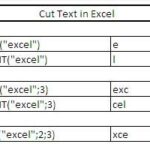Subtracting a Percentage in Excel
Many times I found it difficult to calculate percentage in Excel. I’ll share my experience in how I was substracting a percentage in Excel with ease.
Why Subtract a Percentage?
Subtracting a percentage is a common task. It’s useful for calculating discounts, decreases in value, or understanding proportional changes.
How Can You Subtract a Percentage in Excel?
Direct Calculation
To subtract a percentage, first calculate the percentage of the original value. Then subtract that amount from the original value. The formula is simple:
=OriginalValue – (OriginalValue * Percentage)
Using Cell References
You can use cell references to simplify the process. Place the original value in one cell, like A1. Put the percentage to subtract in another cell, such as B1. Then, in a new cell, use the formula:
=A1 – (A1 * B1)
Format the percentage cell (B1) as a percentage.
Example of Subtracting a Percentage
For example, if you want to subtract 15% from $100, the formula would be:
=100 – (100 * 15%)
This calculation results in $85 after subtracting 15% from $100.
When subtracting percentages, ensure the percentage cell is formatted correctly. It should be formatted as a percentage for clarity and accuracy. If you’re applying the same percentage to multiple values, consider using absolute references. For instance, use $B$1 for the percentage if it remains constant. Although Excel follows the mathematical order of operations, using parentheses can make formulas easier to read and understand.



